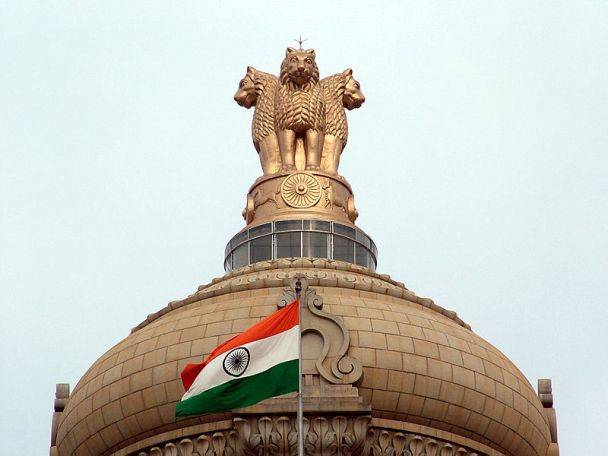Recently, Prime Minister Narendra Modi inaugurated the first National Handloom Day in Chennai, with the aim to resolve various problems faced by weavers. He delved into the question of how to further capitalise on the commercial potential of various handloom products.
Since the first Indian GI was registered in 2004, 236 GIs have been registered with the GI Registry of India. Of these, more than half (64 per cent) are handicrafts, more than one fourth (26 per cent) are agricultural products, and the remaining are food and manufacturing products. India being a treasure house of various handicrafts, textiles and handlooms, it is not a surprise that more numbers of handicrafts are being applied for and registered as GI.
Of the 236 products registered as GIs till April 2015, almost 50 can be identified as handloom products, including Kashmir Pashmina and Kani shawl (J&K), Kullu shawl (HP), Kota Doria (Rajasthan), Tangalia and Kachchh shawls (Gujarat), Paithani saree (Maharashtra), Ilkal saree (Karnataka), Balaramapuram saree and fine cotton fabrics (Kerala), Kancheepuram Silk (TN), Gadwal saree (Telangana), Pochampally Ikat and Uppada Jamdani saree (AP), Gopalpur Tussar fabric and Bomkai saree (Odisha), Baluchari saree (West Bengal), Shaphee Lanphee (Manipur), Banarasi brocade and saree (UP), Chanderi fabric (MP) and Kosa silk (Chhattisgarh). This represents a rich diversity of handloom tradition across India.
Here are a few handlooms/ textiles / handicrafts which have been given GI tag.
1. Kancheepuram Silk was applied for by Department of Handloom and Textile , and was registered on 17th March, 2005 under Class: 24 (Textile Goods) and 25 ( Clothing including sarees and rumal).Kancheepuram Silk sarees are hand woven with dyed silk yarn and inter-leaved design made with Kancheepuram is a traditional centre of the silk weaving and handloom industries for the producing Kancheepuram sarees, since the late 18th century.
2.Orissa Patachitra got registered as a GI on 9th April 2007, under class 24 and 16 ( Wall hangings made of textile and paintings). The Proprietor Registered & Applicant of Orissa Patachitra is “Orissa State Cooperative Handicrafts Corporation Limited.”
The word Pattachitra is derived from the Sanskrit word “patta”, which means a painted piece of cloth, or a plate; chitra means paintings or picture The brilliantly colored patachitra works were produced at puri or souvenirs for the pilgrims of the Jaganath temple. Themes for these paintings range from incidents in Krishna’s life and the avatars of Vishnu to the epic tales of Ramayana and Mahabharata.
3.Muga silk is a registered GI from the state of Assam. In the present day, Muga silk constitutes the state’s most popular export product after Assam tea.
The Patent Information Centre of the Assam Science Technology and Environment Council (ASTEC) secured registration for Muga in 2006, which is incidentally the first registered GI from the north-eastern region. While ASTEC is the registered proprietor of the Muga GI, till date, there are no registered users.
4.Phulkari-Punjab Small Scale Industries & Export Corporation Limited (PSIEC) had applied for registration of Phulkari in March 2005. It was registered as a GI in 2011, under class 26 (Textile), though an opposition was filed by a Mumbai-resident claiming that it would affect those earning a living through this work outside Punjab.
“Phulkari” means “flower working” or “flower embroidery” and finds its origins in the 15th century. It is a traditional embroidery work with intricate and original geometric or floral designs and patterns with harmonious colour combinations. The stitches are even, regular and smooth which is reflected at the back of the Phulkari.
Besides being used as odhinis (veils), shawls and bedspreads, it is also used as the canopy over the Guru Granth Sahib. Phulkari also has historical significance and the mention of the term “Phulkari” can also be found in the Punjabi folklore of Heer-Ranjha.
5.‘Banaras brocades and saris’ secured registration under the GI Act in September 2009, with the application filed on July 4, 2007 by nine organisations viz. Banaras Bunkar Samiti, Human Welfare Association (HWA), joint director industries (eastern zone), director of handlooms and textiles Uttar Pradesh Handloom Fabrics Marketing Cooperative Federation, Eastern UP Exporters Association (EUPEA), Banarasi Vastra Udyog Sangh, Banaras Hath Kargha Vikas Samiti and Adarsh Silk Bunkar Sahkari Samiti. The application was filed under class 23, 24, 25 and 26.
The main centres of the brocade weavings are at Varanasi, Azamgarh, Mirzapur, Bhadohi (SantRavidas Nagar), Chandoli, Chunar and Chakia. The Banaras kimkhab and other gold-and-silver-thread fabrics, with a heavy body of silk, are woven with an indigenous device, quite special to Banaras. The reasons which make Banaras Brocades and Sarees special are heavy gold work, compact weaving, metallic visual effect, etc. Over the years, the Banaras Silk handloom industry has been incurring huge losses because of the unfair competition from mechanised units producing the similar ‘Baranasi silk sarees’ at a much faster rate and at much cheaper cost. Another source of competition has been that sarees made of cheaper synthetic alternatives to silk. Thus, post registration, only sarees produced in Varanasi, Azamgarh, Chandauli, Jaunpur, Mirzapur and Sant Ravi Dass Nagar (Bhadohi) will be considered Banaras Brocades Sarees.
GI holders have limited rights, as they don’t have assignment rights but the rights can be held in perpetuity as long as the product-place link is maintained. GIs also helps in keeping the knowledge in the public domain, but only the registered users can use the knowledge to produce the GI registered goods.
There is a immense cultural importance attached to these GI products. With the help of the various awareness initiatives of the government, the producers of these handloom products will get a chance to expand the market for these goods.
Authored by Sambhabi Patnaik.
Read Dr. Kalyan’s note on The Case of Indian Intellectual Property
Reference- here
Image Source/ Attribution- here, governed by Creative Commons License CC BY 3.0



